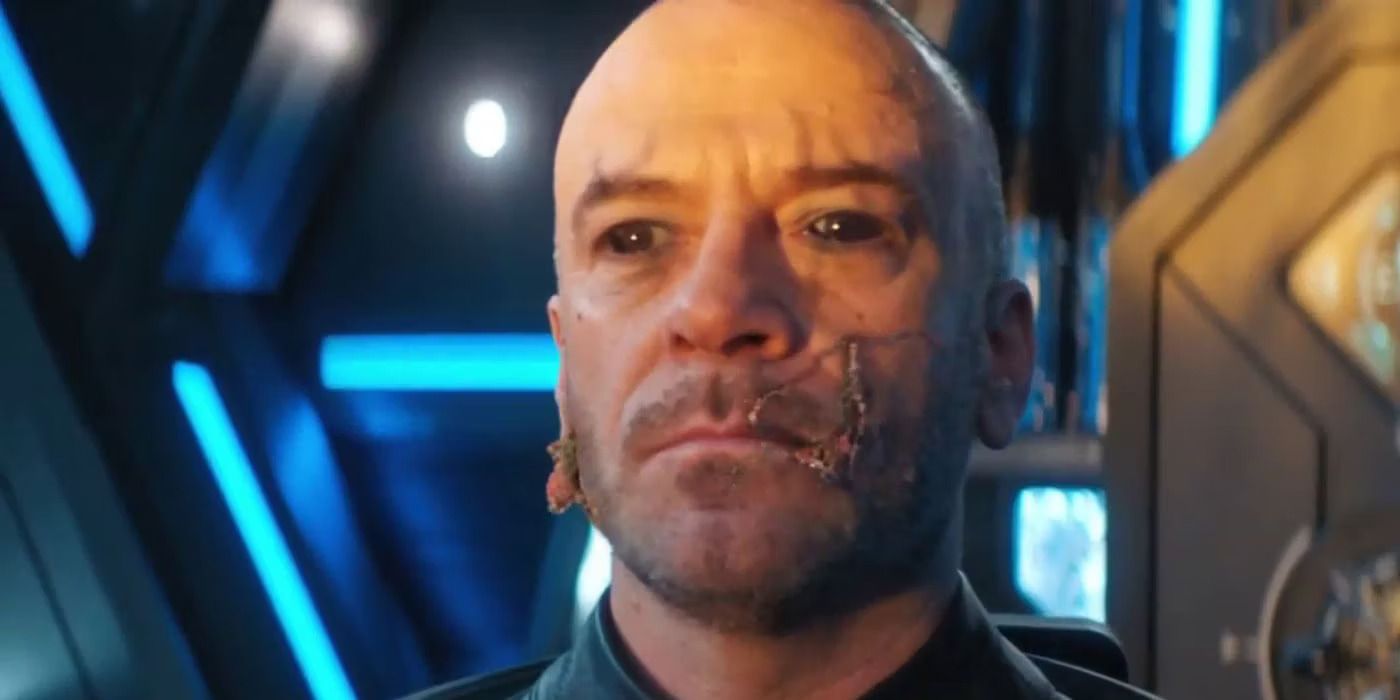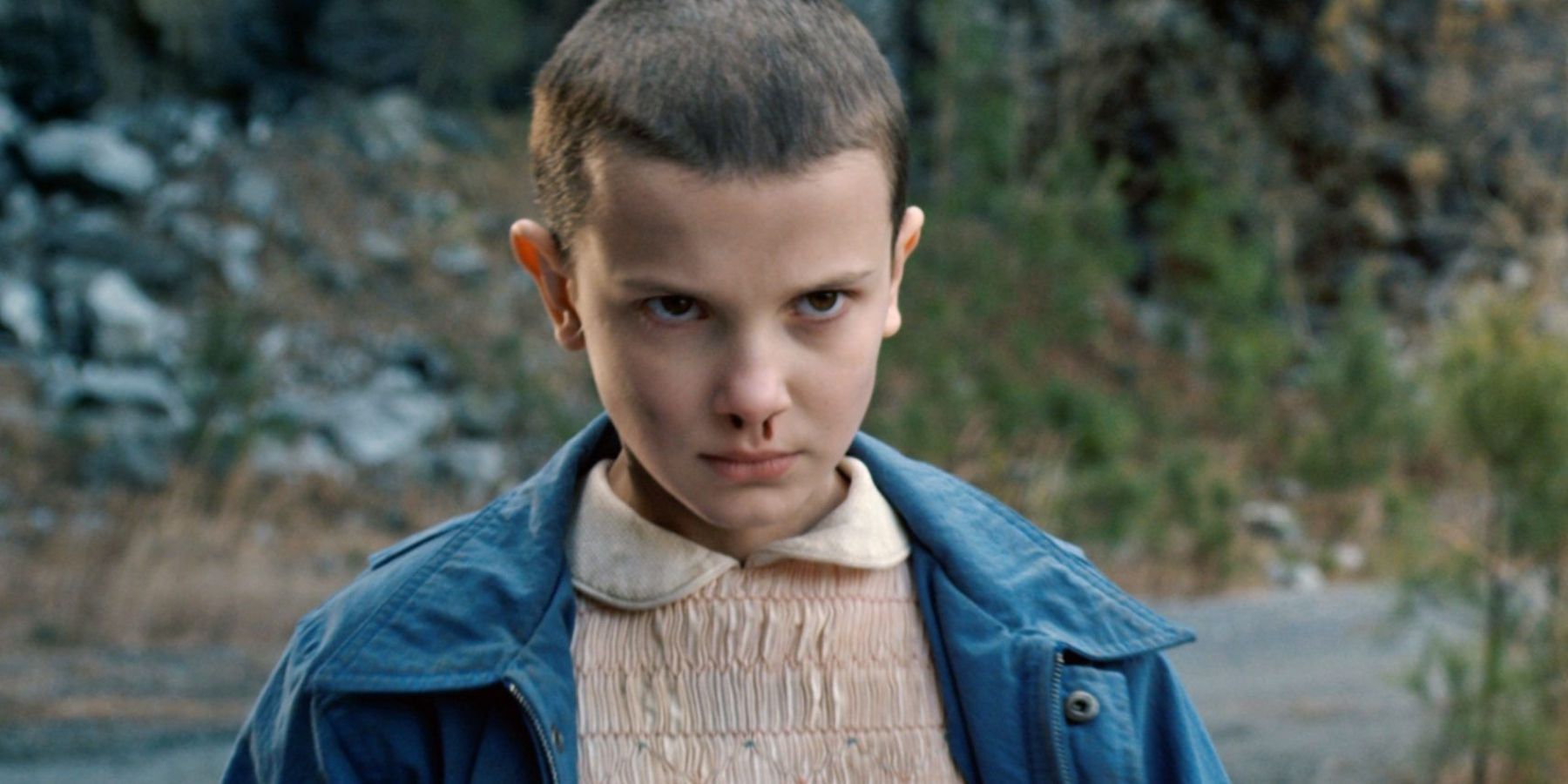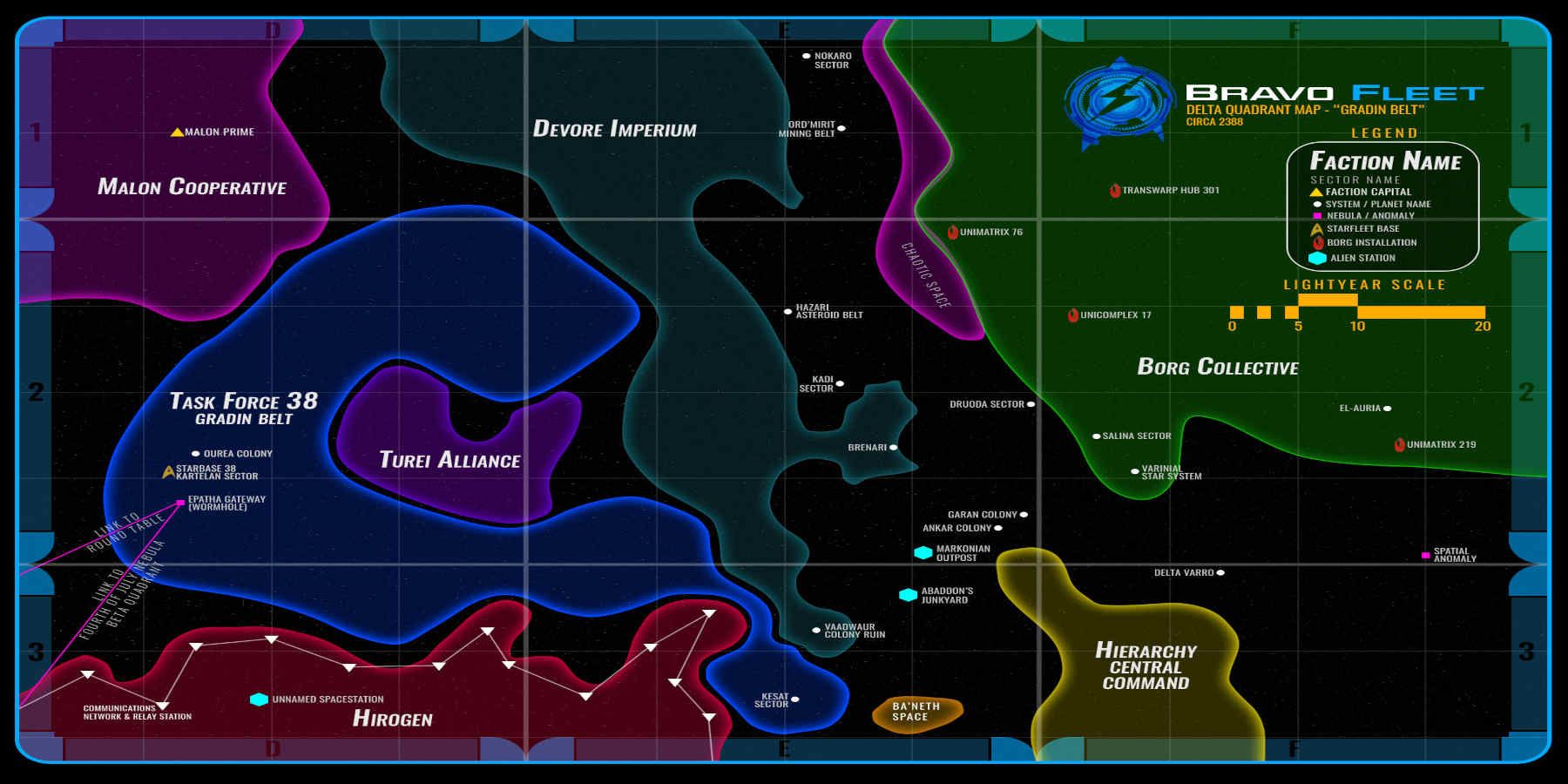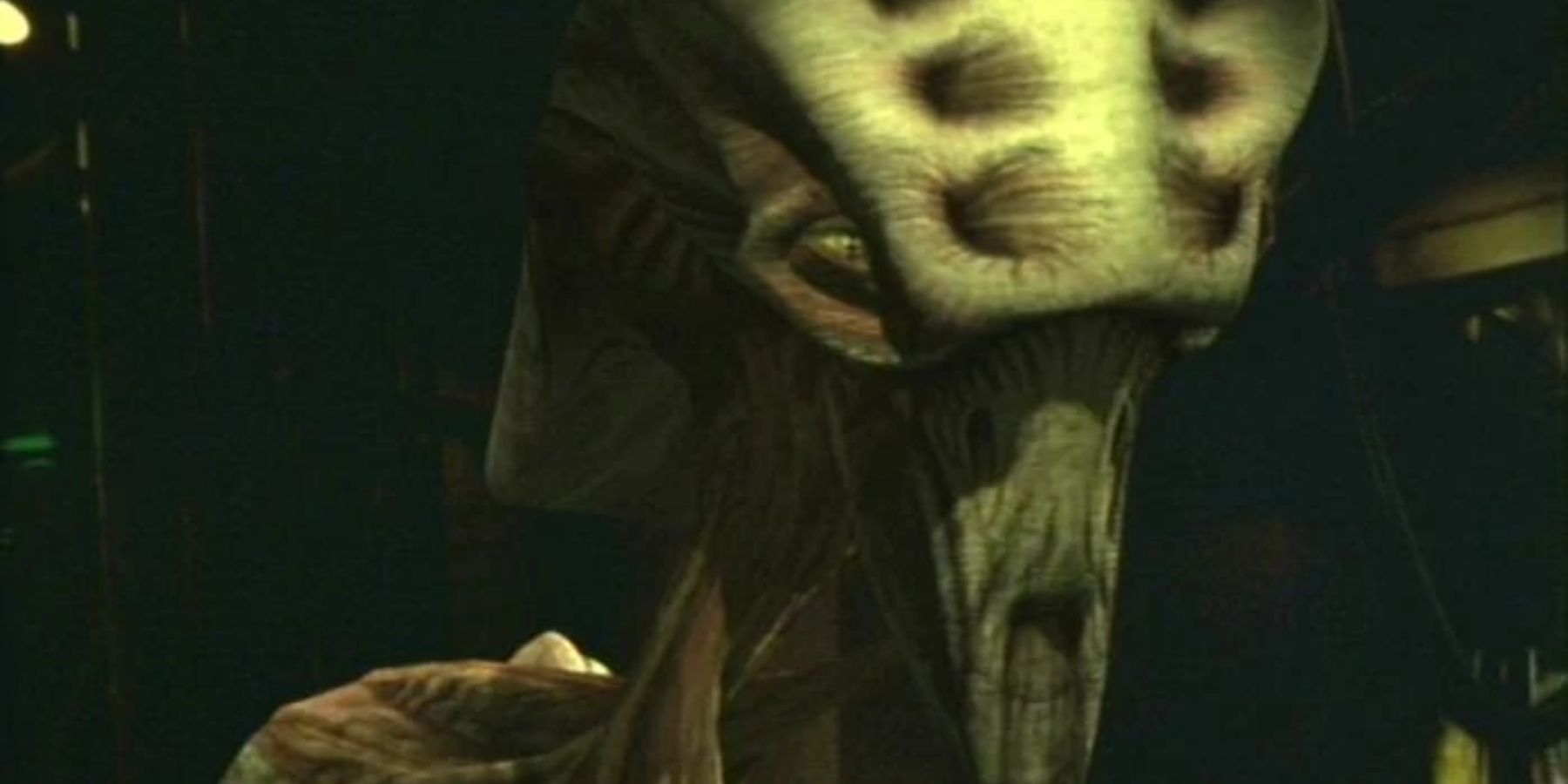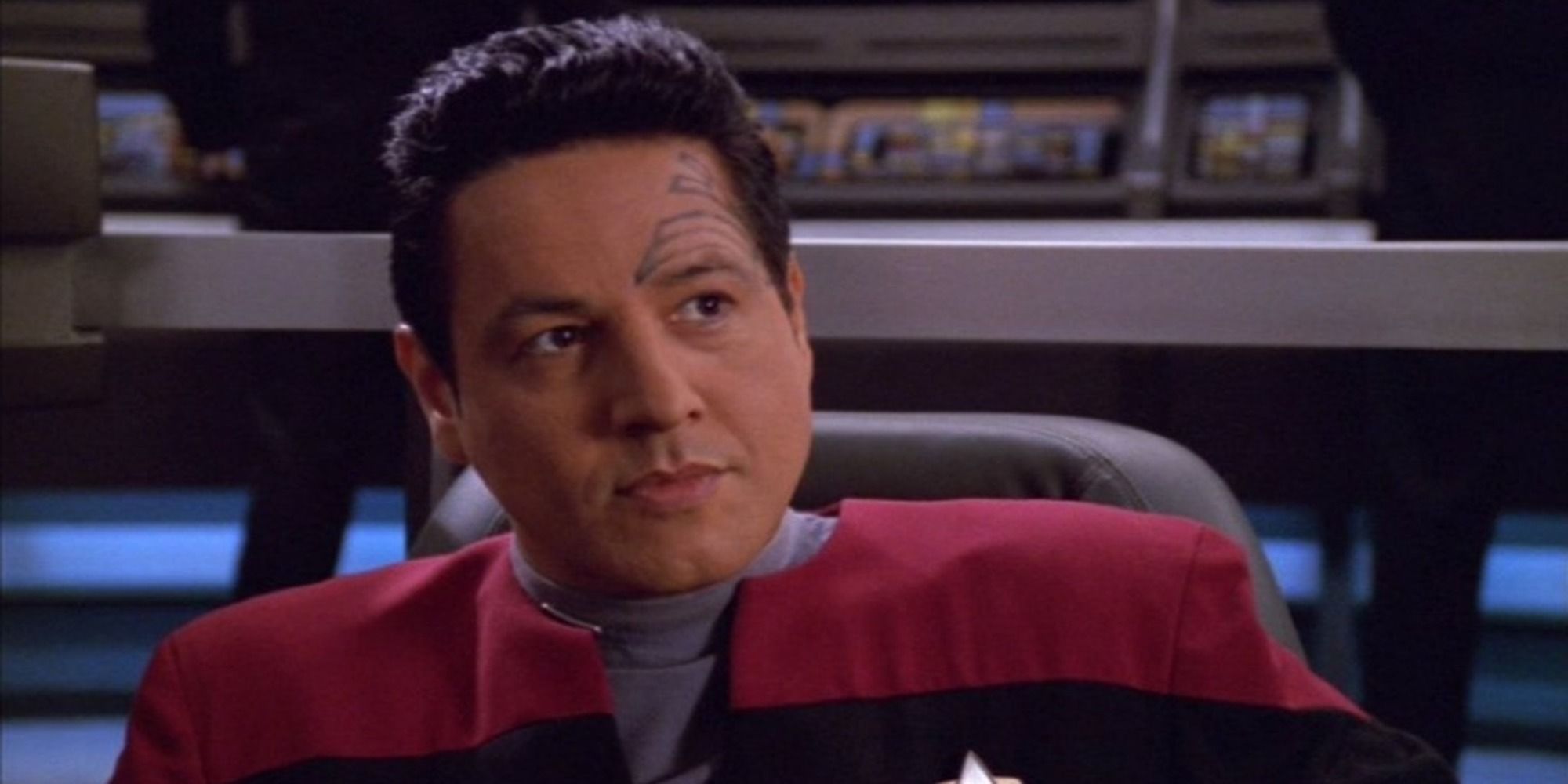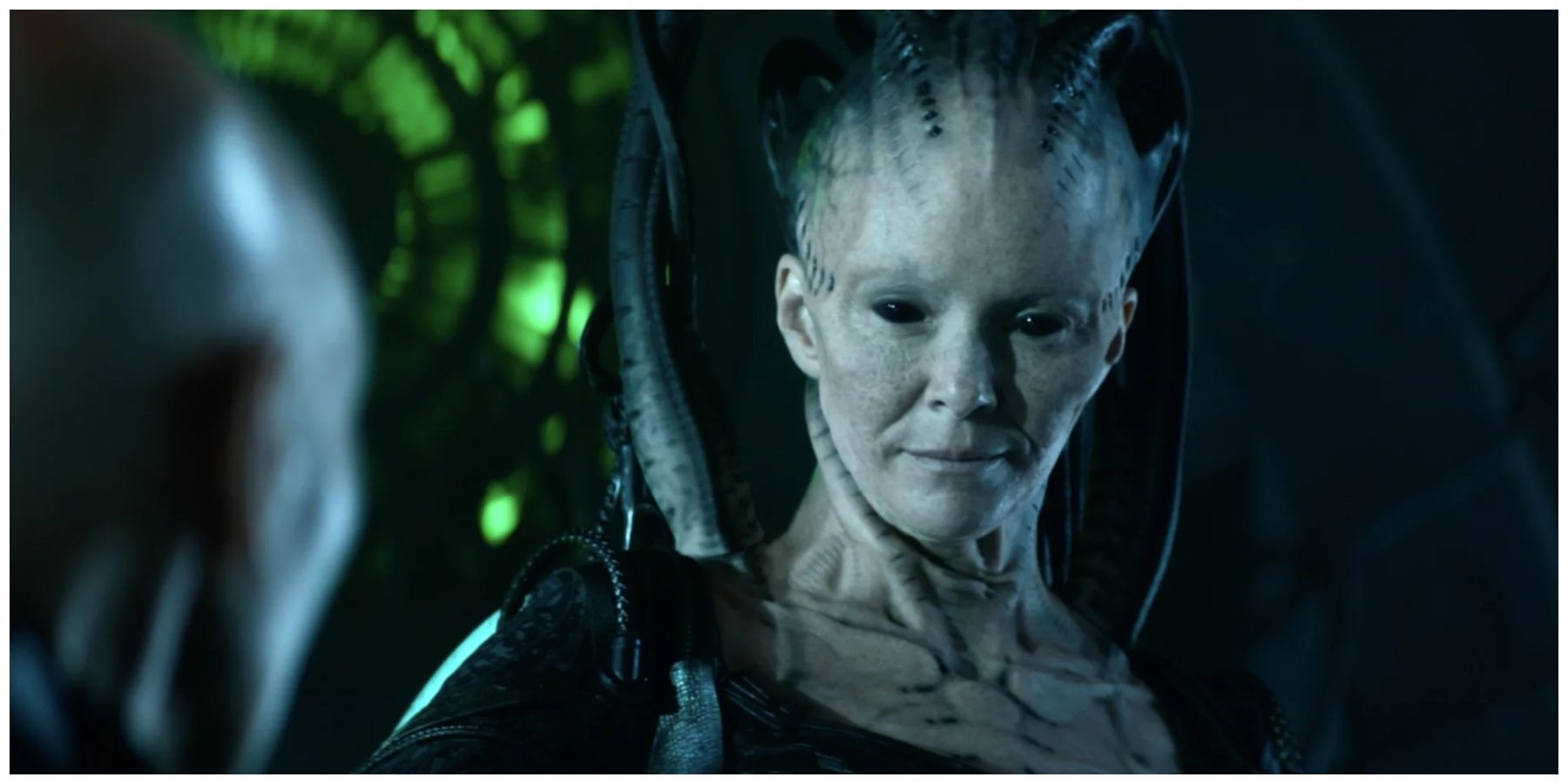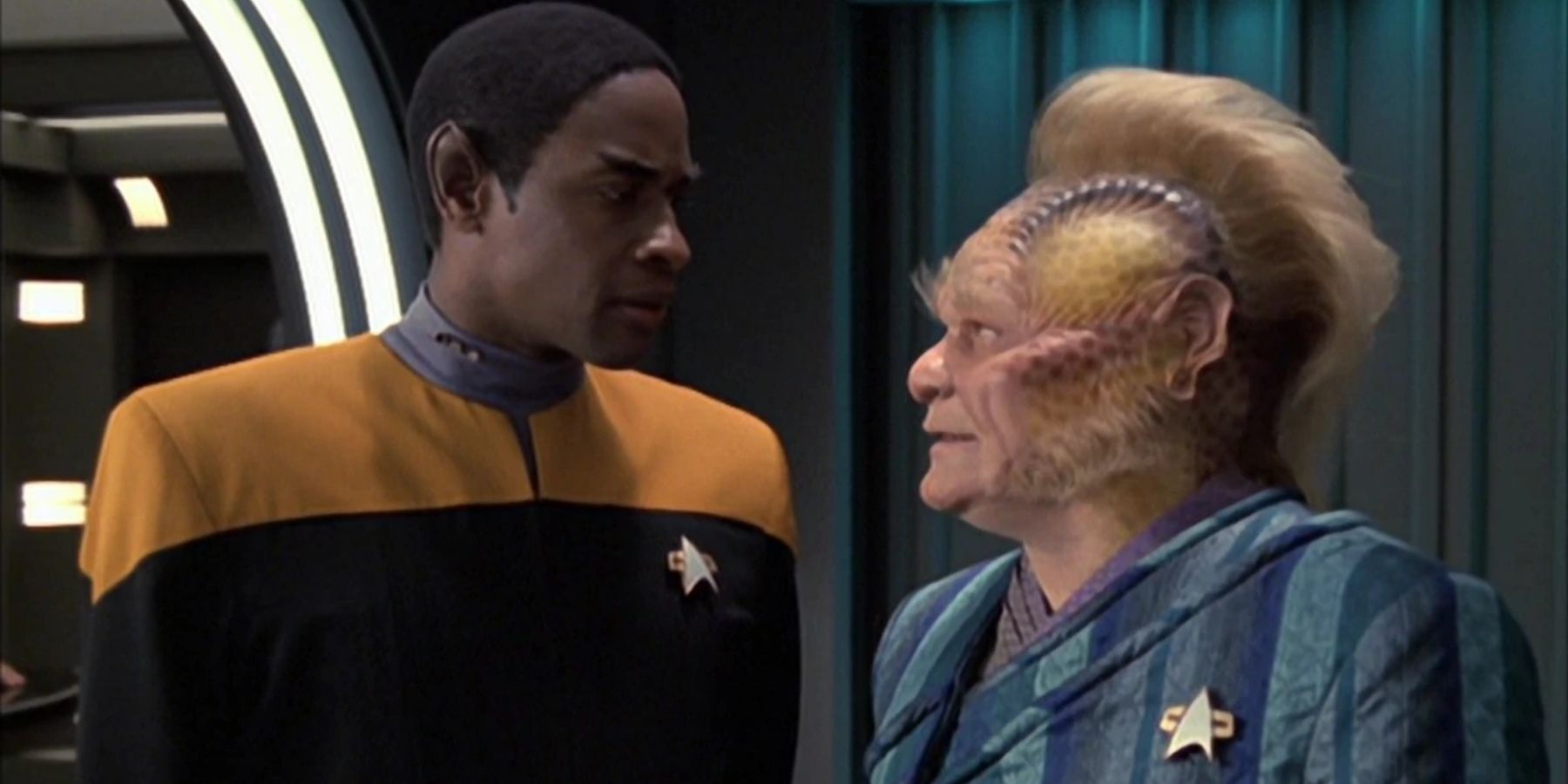Most Star Trek fans associate the Delta Quadrant with the chilling presence of the Borg, but they aren't the only ones who call it home. The franchise has always had a knack for making fantastical concepts out of reality. It looked at the history of the dinosaurs and said, “What if some of them went to space?” This speculation is how fans were introduced to the Voth in Star Trek: Voyager, a species distantly related to the dinosaurs of old Earth.
The Voth were the first species to make a home in the Delta Quadrant, long before humans started recording their own history. The only thing more important to the Voth than family is the collective dedication to their culture’s doctrine. Because they were the first inhabitants of the Delta Quadrant, they feel they have a birthright to this section of the galaxy. They’re severely intolerant of outsiders, even going so far as to establish detention colonies both for them and those indigenous to the area who speak out against their doctrine.
Between the Borg and the Voth, common theme in the Delta Quadrant is control and order. That didn’t stop other species from building a life in the quadrant, but it often reared its ugly head in unexpected ways.
What Species Live In The Delta Quadrant?
Species 8472
While the Voth have assumed claim over the Delta Quadrant, they aren’t the only Star Trek species living within its borders. Some are humanoid, and others are not. Species 8472, for example, looks more like it belongs in a James Cameron sci-fi movie, standing almost 10 feet tall with long gangly limbs. They are even more terrifying than the cyborg collective known as the Borg. Species 8472 doesn’t just look scarier, though. They are also one of the few species capable of fighting back against the Borg’s attempts to assimilate them into the collective.
When Species 8472 first appeared in Star Trek: Voyager, they were determined to destroy the Federation and anyone else who challenged them. By season 5, episode 4, “In the Flesh”, however, the crew of the USS Voyager realized Species 8472 was attacking them out of fear, and that they were using a simulation of Starfleet Headquarters to prepare for the worse. When Species 8472 realized that Starfleet wasn’t a danger to them, their simulation instead became a source of joy instead of practiced attacks. They eventually reconciled their differences with Starfleet and, in turn, science officers were able to learn more about the elusive species.
Humanoid Species
The humanoid species of the Delta Quadrant include the Vidiians, Talaxians, Brunali, Ocampa, Kazon, Hirogen, Kobali, and Imhotep. Among them are the Sky Spirits who once traveled to Earth and made contact with the Native American tribe known as the Inheritors. This group evolved into the Rubber Tree People. While Voyager's Officer Chakotay (Robert Beltran) was a descendant of this tribe, he never really believed in the legend of the Sky Spirits.
Then in season 2, episode 9, “Tattoo,” he was forced to reckon with his lack of belief after meeting the Sky Spirits face-to-face in the Delta Quadrant. It wasn’t the first time Star Trek introduced spiritual concepts or put a non-believer through a religious experience. It was, however, the first time a crew member had personal ties to the encounter, which later left them feeling more connected to their own culture.
Chakotay learned that the Sky Spirits came to respect his ancestors for their dedication to taking care of their homeland. They granted them the gift of caring for it by using the CHAH-mooz-ee symbol to heal it. Even though Chakotay claimed to be a non-believer, he carried this symbol on his personal belongings and immediately recognized it on the moon where he discovered the Sky Spirits were living. From a global perspective, it’s a heartwarming tale of using scientific exploration in space to dive into one’s own cultural roots. But there were still forces in the Delta Quadrant seeking to cause others harm.
Did The Borg Originate in the Delta Quadrant?
The Borg were a force to be reckoned, and their constant attacks on the Federation started in Star Trek: The Next Generation. The assimilation of Captain Jean Luc Picard (Patrick Stewart) was a devastating blow to fans and crew members alike. The worst part? It resulted in the deaths of many – including Jennifer Sisko (Felecia M. Bell) – during the Battle of Wolf 359.
The Borg had a bigger presence in Star Trek: Voyager, both as a threat and also in the form of Seven of Nine (Jeri Ryan), who went on to become an integral part of the crew. It makes sense that this meant that the Borg also had a bigger presence in the Delta Quadrant, as it was the location for much of the series.
In a two-part episode, fans learned that the Borg existed in something called a Unicomplex. It sounds like a dormitory for college students, but the reality is much more terrifying. A Unicomplex contains thousands of Borg structures connecting, among other things, trillions of drones. The series finale of Star Trek: Voyager saw this Unicomplex destroyed. It was never mentioned, though, if it was one of a kind or only one of many. This uncertainty makes it hard to definitively say whether the Borg would consider the Delta Quadrant their birthplace, or just another area from which they could terrorize the galaxy.
Why Is The Delta Quadrant Important?
That being said, the Delta Quadrant is more than its most hostile inhabitants. Star Trek established the quadrant for the same reason as the rest – to contain the wide variety of species introduced into the franchise.
The Delta Quadrant is the central location of the Borg. It also has a long, bloody history of bad blood between different species. The Vaadwaur and the Briori, for example, enslaved others until the people they were oppressing fought back to gain their freedom. At the same time, the Delta Quadrant produced characters like Neelix (Ethan Phillips). He was a favorite of Star Trek fans (even when he was engaging in questionable romances) and characters seemed to really like his food.
The Delta Quadrant gets a bad reputation, often making people forget that there’s still so much of it that hasn’t been explored. While it’s not as mysterious as the Beta Quadrant, it still has the potential to produce storylines that aren’t so destructive.

